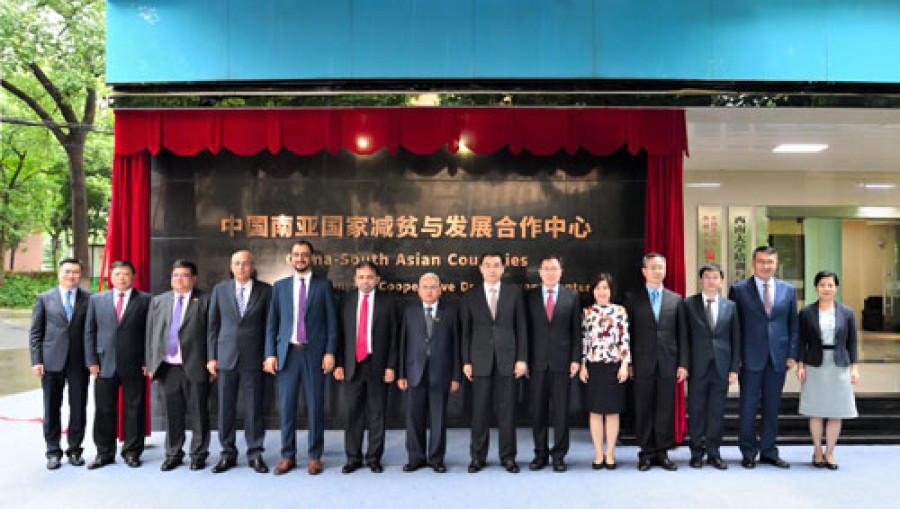Editorial
The proof of the pudding
The success of China’s poverty alleviation centre depends on how sincere it is towards bringing change.
China on Thursday established the China-South Asian Countries Poverty Alleviation and Cooperative Development Centre at a programme organised to commemorate the centenary of the establishment of the Chinese Communist Party in the presence of the ambassadors of five South Asian countries—Afghanistan, Bangladesh, Nepal, Pakistan and Sri Lanka. The Centre’s stated aim is to focus on humanitarian projects as China is increasingly keen to expand its soft power in its neighbourhood. As South Asian countries struggle to come out of poverty, the Chinese initiative to support them sounds pretty reasonable. But there are several caveats.
“The centre aims to pool strength, integrate resources and exchange wisdom to support and help the South Asian countries' economic development and livelihood improvement, jointly promoting the cause of poverty reduction,” the Chinese Foreign Ministry said in a statement. At the outset, the establishment of an institution to alleviate poverty in South Asia without the participation of India sounds like a far-fetched dream. India has the highest concentration of poor people in the region, and any attempt at poverty alleviation cannot come to fruition without the active participation—and cooperation—of India.
As the South Asian Association for Regional Cooperation remains moribund thanks largely to a tussle between India and Pakistan, it is only natural that China would want to make its entry into South Asia. For a few years now, India has focused its regional cooperation on the Bay of Bengal Initiative for Multi-Sectoral Technical and Economic Cooperation largely to alienate Pakistan from the South Asian region. Clearly, the difference between the South Asian titans has created an opportunity for China to make its much-awaited entry into the region.
In addition to the newly established poverty alleviation institution, China also reportedly aims to further its humanitarian work through the China-South Asian Countries Emergency Supplies Reserve as well as the China-South Asian Countries E-commerce Cooperation Forum on Poverty Alleviation in Rural Areas. In addition, the Belt and Road Initiative is already underway. In that sense, South Asian countries now have multiple options to engage with China. But the real test of the cooperation depends on whether China makes genuine efforts towards lifting the neighbourhood out of poverty through technology transfer, economic support and humanitarian aid, and whether the South Asian countries can reap the benefits of their growing proximity with China.
Ultimately, such blocs are created to maintain geopolitical power balance apart from the stated aim of cooperation towards poverty alleviation and development. Even if the cooperation makes any headway, it might take years, even decades, for actual results to become apparent. An example is the Trade and Transit Agreement, signed between China and Nepal in the wake of the 2015 Indo-Nepal border blockade, that has yet to take off. Experts say that Nepal has yet to come up with a modality to utilise the sea and land ports provided by China for importing and exporting goods. The agreement has worked only for Prime Minister KP Sharma Oli to buttress his image, rather than being translated into actual work. The success of the newly established poverty alleviation centre, thus, depends on how sincere the Chinese government is towards bringing actual change on the ground as well as the alacrity among the South Asian countries to reap the benefits of China’s increasing soft power through humanitarian engagement with the region.




 15.76°C Kathmandu
15.76°C Kathmandu














